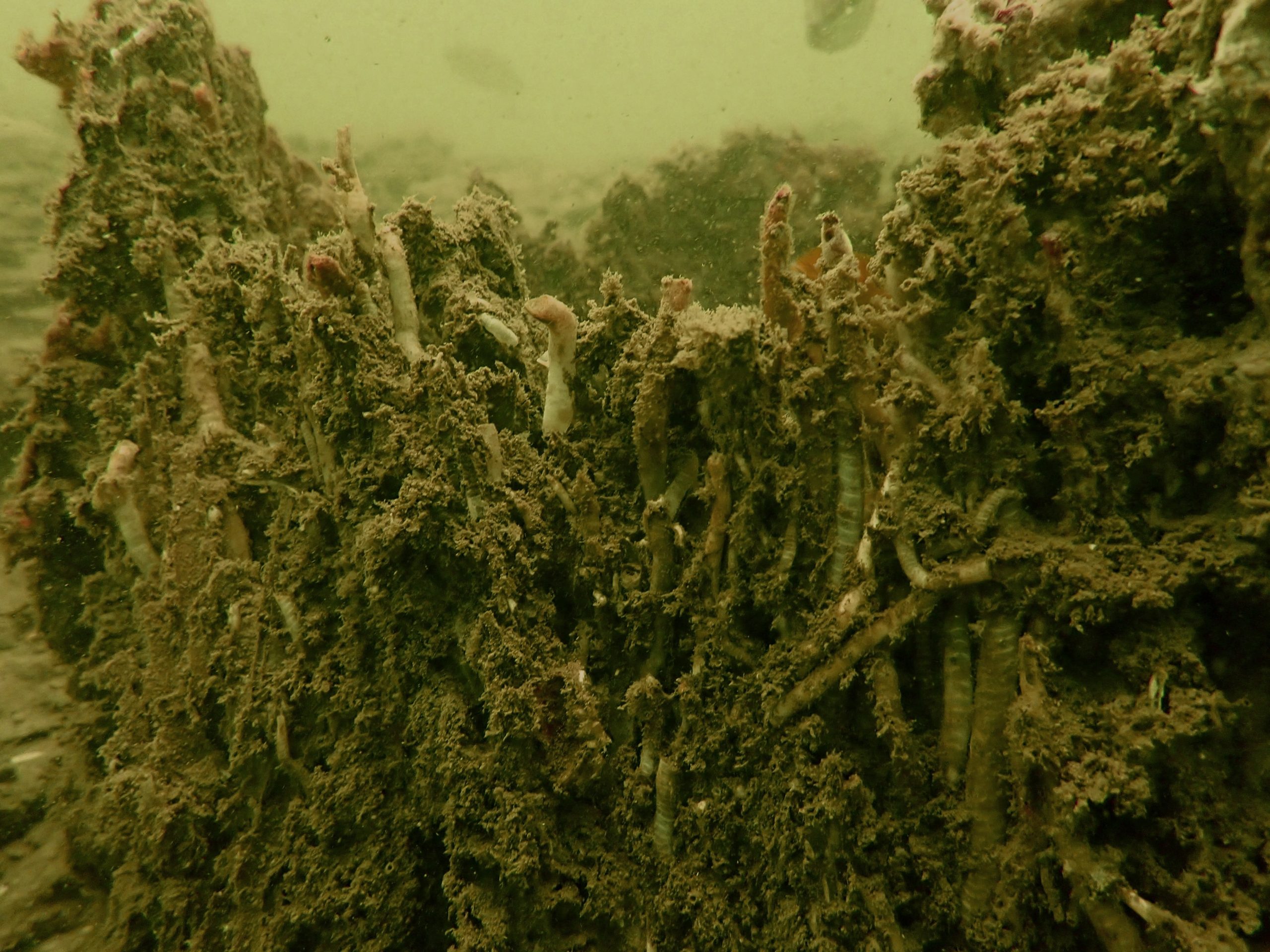Calling all ham radio operators: The Federal Communications Commission has authorized special event callsign W4U to operate through Saturday, 11 September 2021. This special event station, the “Gulf of Mexico Underwater Forests,” will educate the worldwide amateur radio community about a unique scientific discovery: remains of an ancient cypress forest that once graced the Alabama coastline but now, due to sea level rise, lies 60 feet beneath the waves.
The site is littered with 60,000-year-old tree trunks encrusted with a huge variety of sea creatures, and shot through with burrows of wood-eating clams known as shipworms. With expert assistance from the Dauphin Island Sea Lab (DISL), a team of researchers from the Ocean Genome Legacy Center at Northeastern University and the College of Pharmacy at the University of Utah are exploring this unique site using a combination of SCUBA and robotic submarines. The project, funded by the National Oceanic and Atmospheric Administration (NOAA), aims to discover new species of animals and drugs—such as antibiotics and anticancer agents, and industrial enzymes, such as cellulases—made by the unique creatures found in this ancient underwater forest.

A brightly colored fish hiding within the wood. [Photo credit: Sarah Leinbach]
On Tuesday, 7 September, and Wednesday, 8 September, from 10 AM–4 PM EDT, a ham radio station will be set up at Northeastern’s Marine Science Center. Professor Mark Patterson (WB2OIL), who is a co-principal investigator on this project, along with Ocean Genome Legacy staff and the Marine Science Center community, will be on hand to answer any questions about the underwater forest research. We’ll discuss the remarkable animals living in the Alabama Undersea Forest in the Gulf of Mexico, the importance of marine DNA repositories, and so much more! We hope to make contact with ham radio operators thousands of miles away.
We will dive deep into this unique underwater forest, and ask what it can tell us about both the past and the future. The ancient wood, impeccably preserved after 60 millennia buried under the sea floor, was likely re-exposed recently due to severe storm activity. This site and its creatures may not only reveal drugs of the future, but will also help us to understand the fate of a world ocean in the face of climate change driven sea level rise and increasingly powerful storm activity.
You can check out this ongoing research here.

Shipworms burrowing into cypress tree remains. [Photo credit: Sarah Leinbach]
For hams worldwide who want to make contact with W4U: Look for us on 160-10 m on CW, SSB, and FT8 digital modes. A special web page for W4U is available.
If you want to see pictures of the underwater robots used in this research, visit WB2OIL’s page.
For stations that make contact, a special QSL card is available from eqsl.cc/ for this event. The QSL card includes URLs to learn more about the NOAA-funded research on the underwater forest and drug discovery. These URLs are: tinyurl.com/NOAAdrugdiscovery; tinyurl.com/sunkenforest; tinyurl.com/underwaterforest; and tinyurl.com/OGLMSC.
Want to support future research involving shipworms and the Alabama Undersea Forest? Support OGL here!
